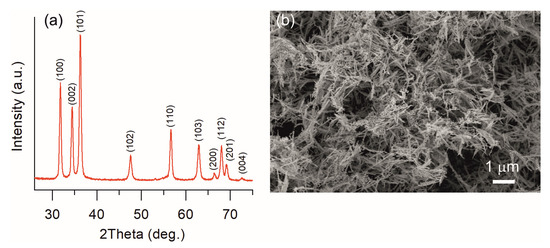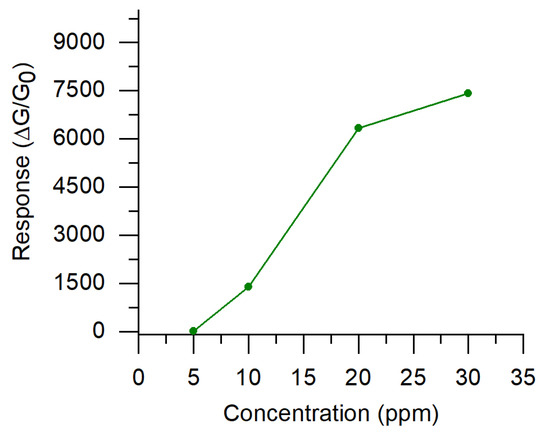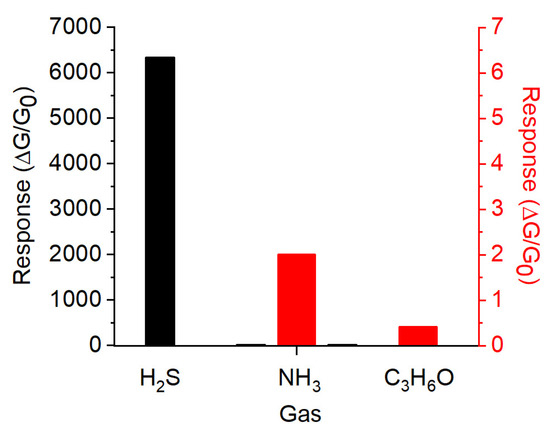Hydrogen sulfide (H2S) is a colorless, highly flammable and toxic gas. It is produced due to industrial activities including petroleum refineries, natural gas plants, sewage treatment plants and tanneries. Its presence causes eye irritation, fatigue, headache, poor memory, dizziness, olfactory paralysis and respiratory distress. An increase in the concentration of H2S up to 700 ppm causes human death. Therefore, the monitoring of H2S levels in ambient, particularly in areas at hazardous waste sites is needed [1].
Metal oxides are very attractive materials for the fabrication of chemical sensors due to their ability to interact with different gaseous compounds. In this aspect, the preparation of nanoscale oxide materials seems to be more efficient to improve their functional performance and open new perspectives for their application in chemical gas sensors. Recent years, the ZnO nanomaterials have been studied for the detection of ZnO owing to its high electron mobility and thermal stability. However, it is still a challenge to achieve high response and selectivity of ZnO towards H2S.
Herein, we present the synthesis and study of the gas sensing properties of ZnO nanomaterial for the detection of H2S. ZnO nanomaterial was prepared by combination of electrochemical anodization and thermal decomposition methods [1]. First, metallic zinc films were deposited on alumina substrates by means of radio-frequency (13.56 MHz) magnetron sputtering. The sputtering power and the time were 75 W and 35 minutes, respectively. To improve the adhesion of metallic films the temperature of the alumina substrates was kept at 300 °C during the sputtering process. Then, the metallic films were electrochemically anodized in a Teflon cell using a two-electrode system. The electrolyte solution was oxalic acid dihydrate (C2H2O4⋅2H2O) containing ethanol. We have investigated the materials structural, morphological and sensing properties. Figure 1a reports the XRD spectrum of the nanomaterial. As can be seen, the fabricated material is crystalline ZnO. The morphological (Figure 1b) analyses were carried out by scanning electron microscope (SEM). The prepared materials have a nonosized structure, which consists of nanoparticles connected to each other and forming chains with the length of a few microns. Figure 2 reports the gas sensing response variation of the ZnO depending on the concentration of H2S. The selectivity of the prepared ZnO was studied towards 20 ppm of ammonia (NH3) and acetone (C3H6O) at the optimal operating temperature of 400 °C (Figure 3).

Figure 1.
(a) XRD pattern of the ZnO nanostructure, (b) SEM images of the ZnO.

Figure 2.
Gas sensing response variation of the ZnO depending on the concentration of H2S (5, 10, 20 and 30 ppm) at 400 °C.

Figure 3.
Response of the ZnO towards 20 ppm of H2S, NH3 and C3H6O at 400 °C.
Reference
- Galstyan, V.; Poli, N.; Comini, E. Highly Sensitive and Selective H2S Chemical Sensor Based on ZnO Nanomaterial. Appl. Sci. 2019, 9, 1167. [Google Scholar] [CrossRef]
Publisher’s Note: MDPI stays neutral with regard to jurisdictional claims in published maps and institutional affiliations. |
© 2019 by the authors. Licensee MDPI, Basel, Switzerland. This article is an open access article distributed under the terms and conditions of the Creative Commons Attribution (CC BY) license (https://creativecommons.org/licenses/by/4.0/).